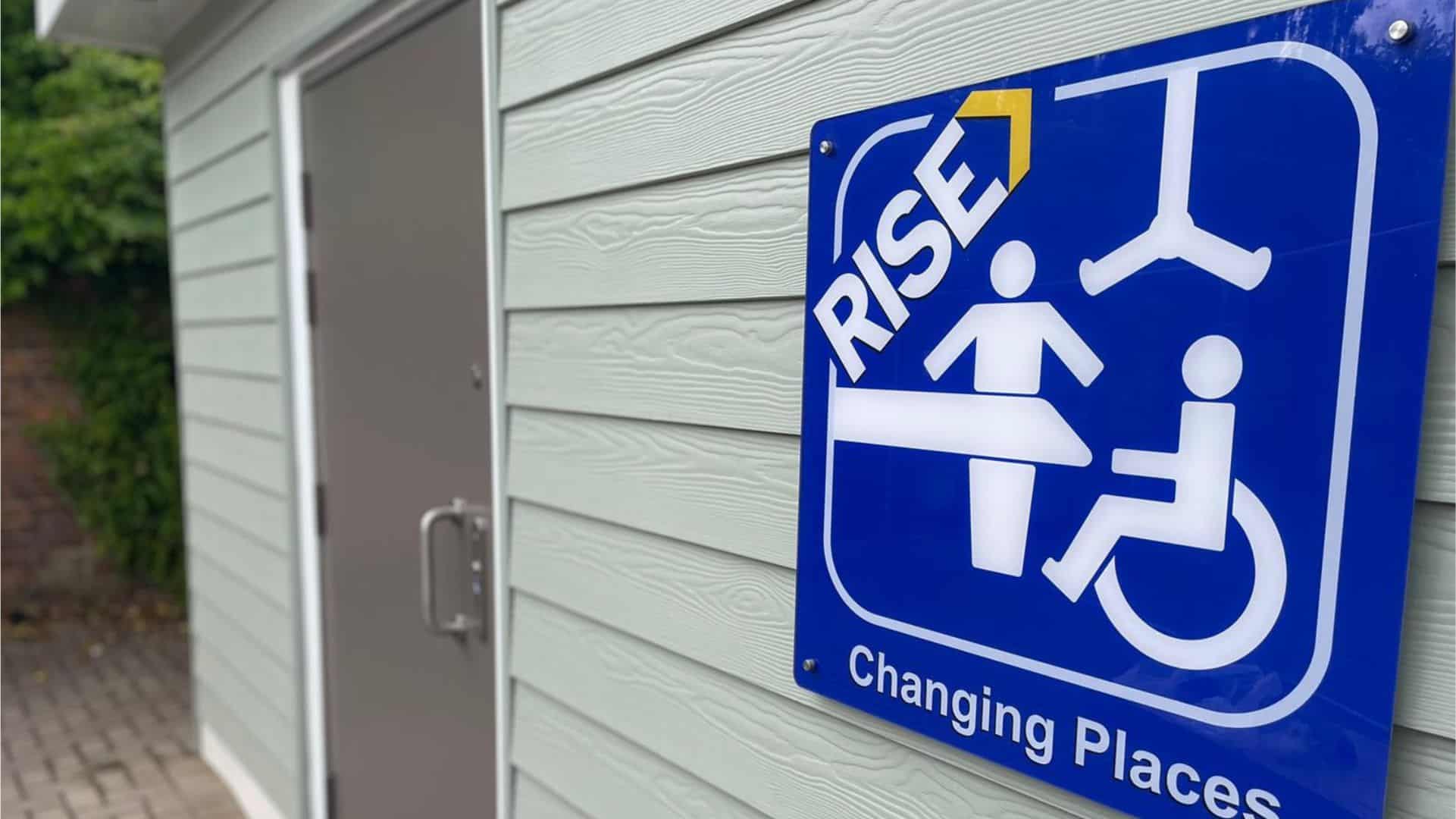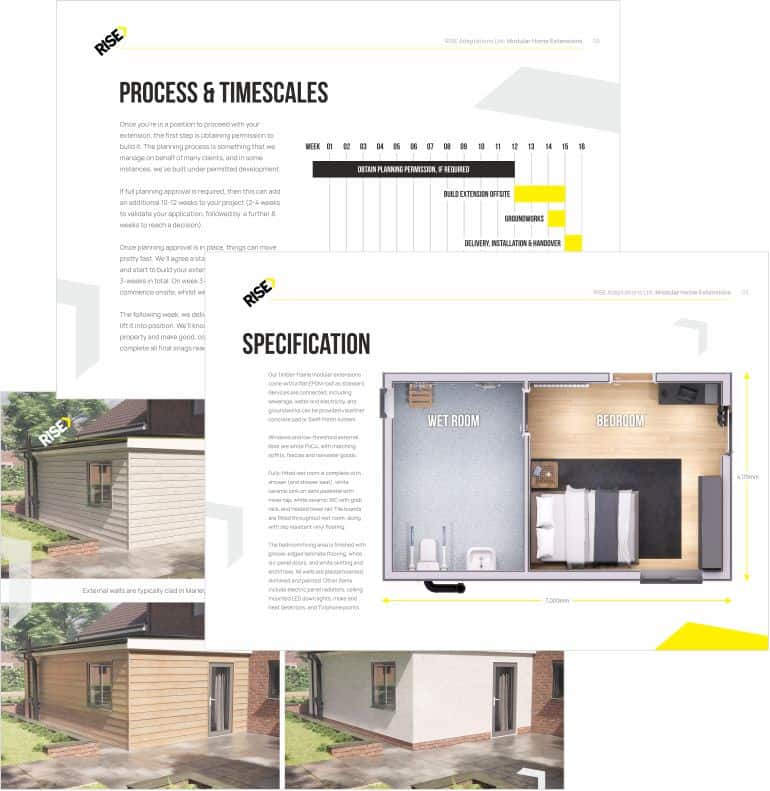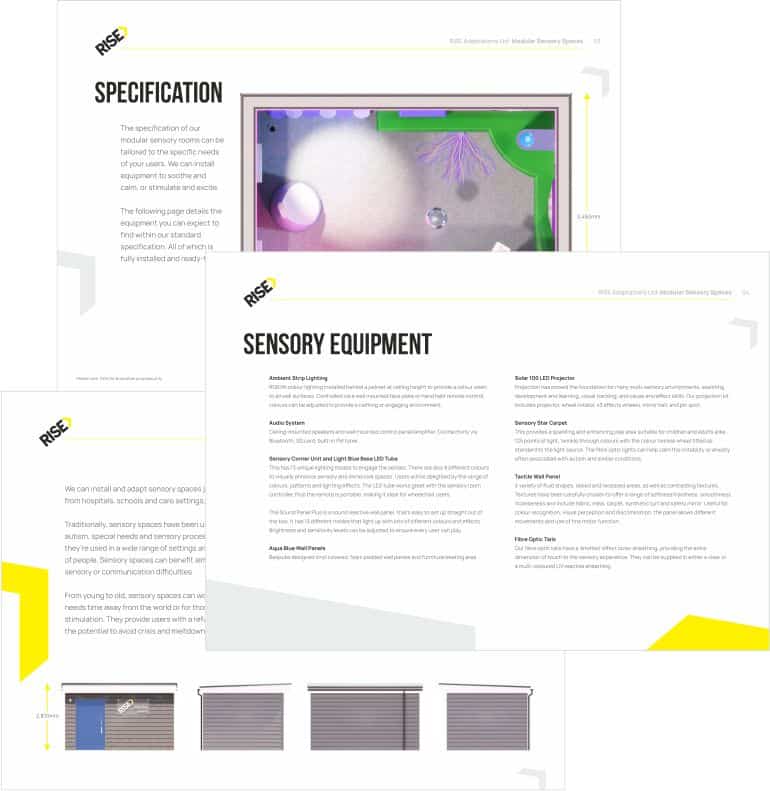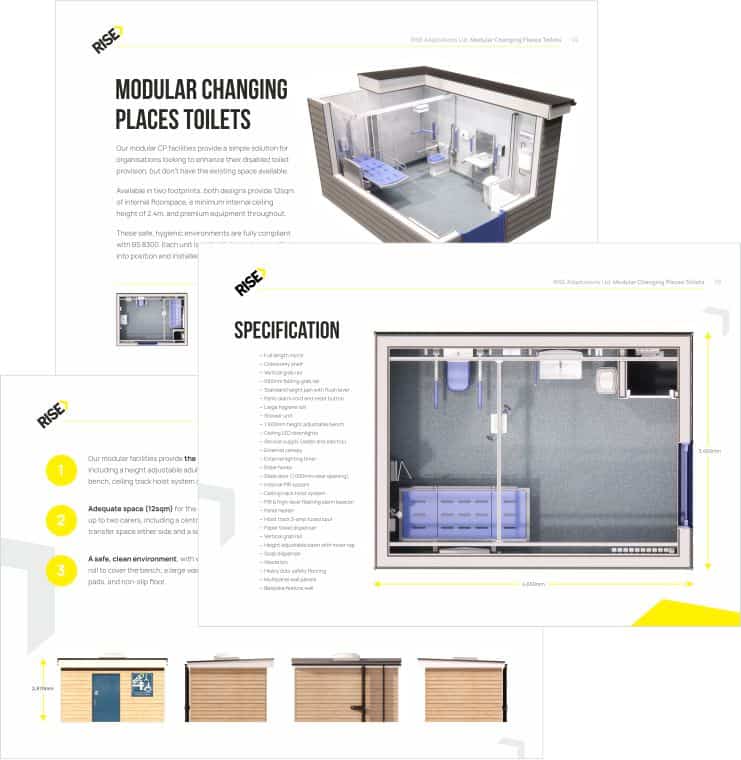
A Changing Places facility is a specific type of accessible toilet, designed for people with disabilities. They are different from standard accessible toilets as they include a wider range of options for people that can’t transfer to a toilet from a wheelchair or may need more than one assistant to help them with hygiene. This includes a large and diverse group of people with disabilities that are usually referred to as having profound and multiple disabilities (PMLD)
A Changing Places facility will contain an adult-sized height adjustable changing bench, a peninsular toilet, hoist, handwashing basin, grab rails and non-slip flooring. These are the core, most important pieces of equipment.
Other items include suitable shelving to the rear of the toilet, suitable taps on the washbasin, alarm cords, a large paper roll dispenser, and good lighting.
The hoist supplied can either be a ceiling-mounted type, or a freestanding model. A ceiling type hoist is preferred though as they take up less space and are less likely to go missing. Slings are not provided in Changing Places toiles – users will bring their own slings with them as in most cases they are customised for their height and weight.
A standard size Changing Places toilet must be a minimum of 12 square metres (3m wide and 4m long, with a ceiling height of 2.4m). This provides ample space for equipment, one wheelchair user, and up to two assistants.
In some cases, where space is very limited, a smaller size Changing Places is better than no facility, but the toilet can’t be registered as an official Changing Places toilet. A smaller facility has several drawbacks, so it is encouraged that other options, including modular Changing Places facilities, are explored first.
The size of a Changing Places facility is one of the key reasons the toilets were developed in the first place, so this aspect mustn’t be overlooked when you are looking to install your facility.

The original concept for the Changing Places toilet was developed by people concerned about the lack of provisions for people with profound and multiple disabilities, through grassroots campaigns, and input from people with disabilities and their families, the design of the Changing Places toilet came to life. The campaign was pushed forward by what has come to be known as the Changing Places Consortium.
Although these new toilets were great, they were not mandated anywhere in building regulations. That is until 2009 when the consortium worked with British Standards to include the design of Changing Places toilets in BS8300. This provided organisations looking to install a toilet with a good idea of what should be included in a Changing Places facility. This then led to the changes made to Part M of building regulations in 2013.
In summary – BS 8300 illustrates the design of a Changing Places facility, and Part M of building regulations is a guide to where and how the toilets should be installed.
Worrying about the design of your Changing Places toilet is natural – you want a fit for purpose facility that meets the needs of the people it was designed for, otherwise, there is little point in installing a facility.
However, so long as you observe the designs published in BS 8300 and by the Changing Places Consortium, you can’t go wrong. To make it even easier, Changing Places providers like RISE only build and install facilities that meet the expectations of BS 8300 – including all the equipment that goes inside the toilet.
From the very start of your project, we can help with access consultation, site surveys, and help you choose between a modular Changing Places toilet or adaptation. We then install your facility and take care of everything from groundworks to painting and decorating. We can even provide training too.
Using a provider like RISE completely removes the need to worry about what makes a Changing Places facility, as we do all the work for you.

Call 07729 224 738 or email hello@riseadapt.co.uk
We’re open Monday to Friday, 08:00-18:00.
To learn more about Changing Places, why not download our brochure or attend one of our monthly online seminars.
Call: 07729 224 738
email: hello@riseadapt.co.uk
08:00-18:00, Mon-Fri
To learn more about Changing Places, why not download our brochure or attend one of our monthly online seminars.
Please submit your details to receive further information about our modular home extensions…
Don’t forget to check your ‘junk’ folder if you don’t immediately receive your download.

Please submit your details to receive further information about our sensory rooms…
Don’t forget to check your ‘junk’ folder if you don’t immediately receive your download.

Please submit your details to receive further information about our Changing Places facilities…
Don’t forget to check your ‘junk’ folder if you don’t immediately receive your download.

Send us a quick message via the form below and a member of the RISE team will be in contact a.s.a.p…